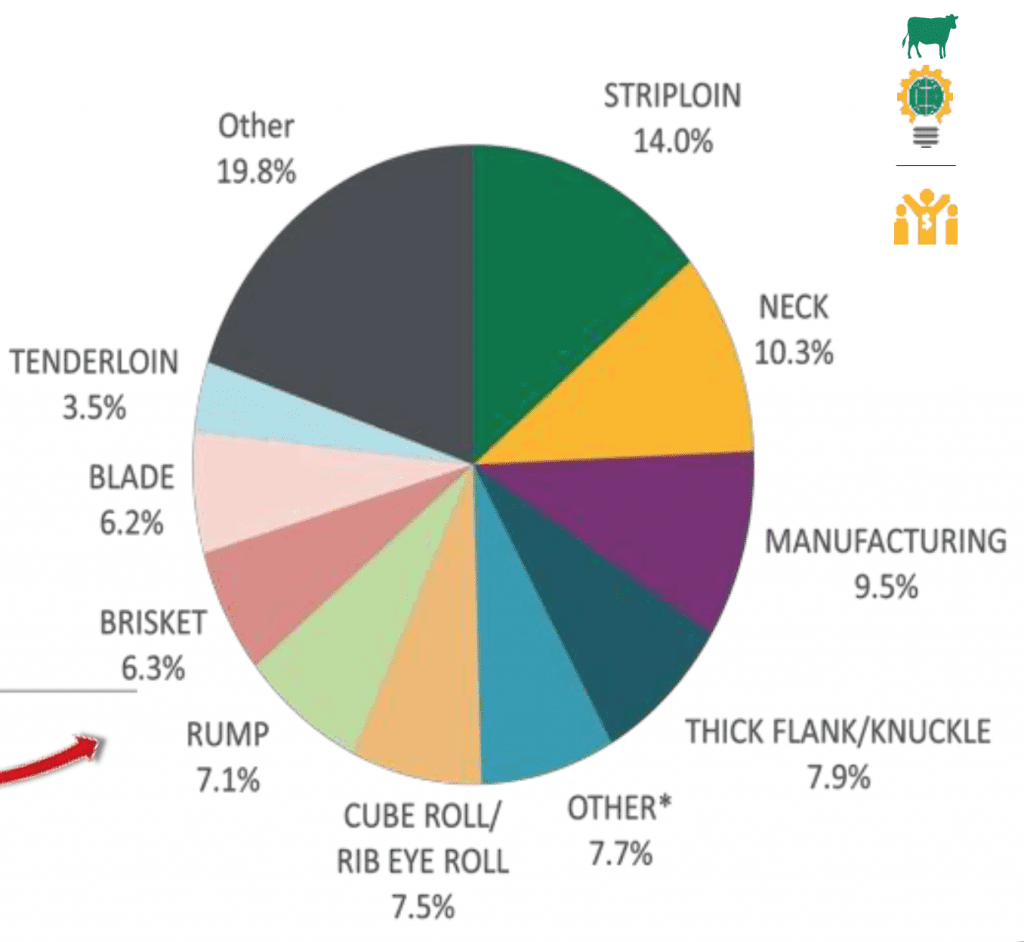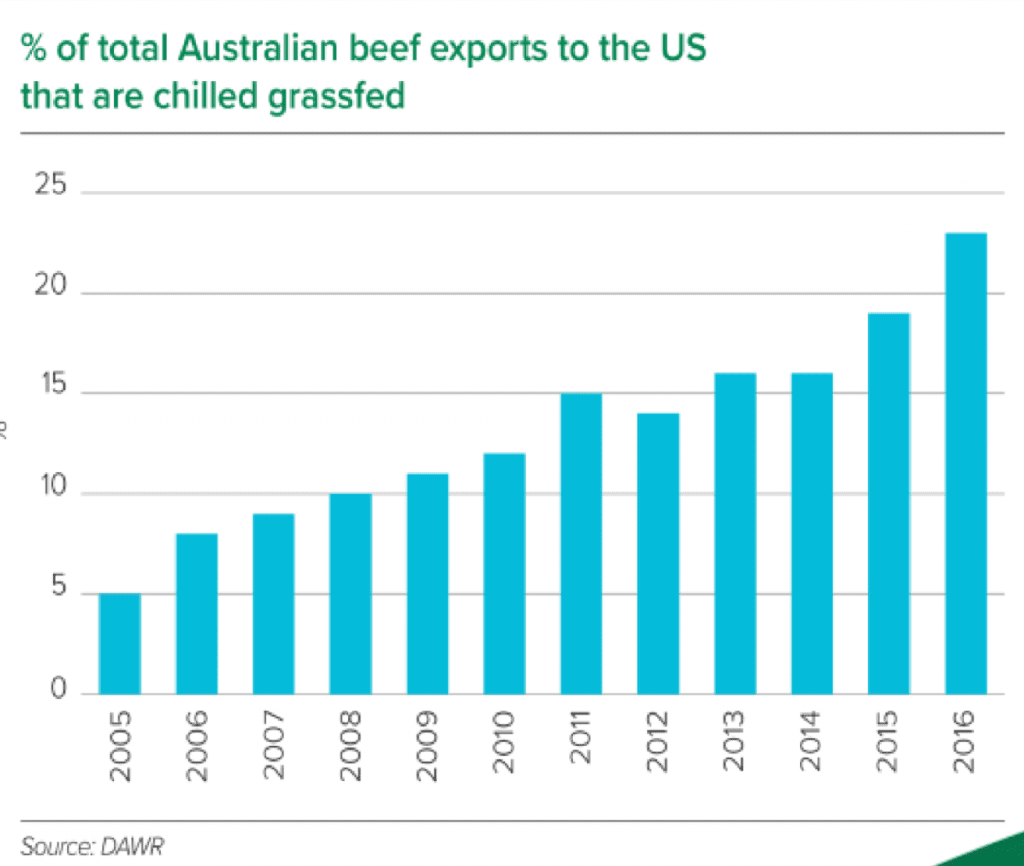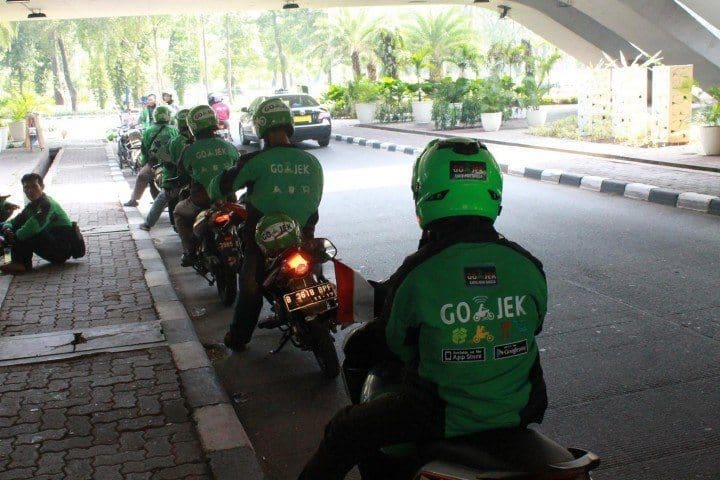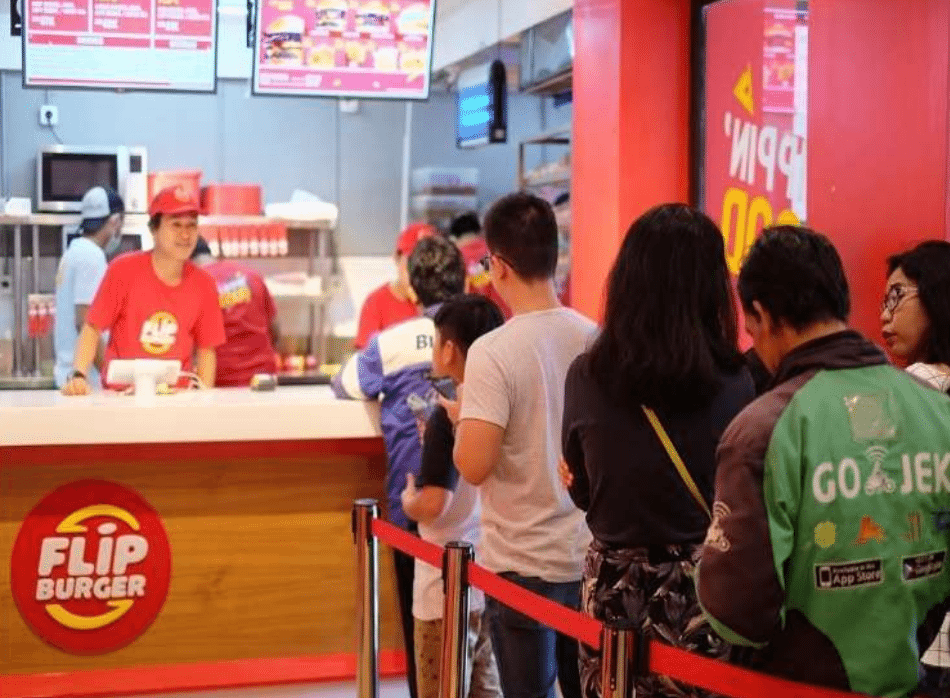MEAT & Livestock Australia’s Global Market Forum in Brisbane on Tuesday gave a room full of beef producers, processors, wholesalers, retailers and exporters the opportunity to gain some first-hand market insights from regional managers all over the world.
For the benefit of readers who couldn’t attend, in addition to our stories filed earlier (linked below this article), here are some brief ‘snapshots’ of other topics we took away from presentations throughout the day:
An ageing population = bigger demand for nutritious snacks?
Australia has an ageing population, and people are living longer. 80pc of people in aged care are malnourished, according to Lantern Project dieticians. Very few industries are doing a good job at developing high value, nutrient dense, snack foods for older people, with packaging that is easy to read, makes the product easy to identify, is easy to open and easy to dispose of and recycle. An opportunity here, beef researchers? (Sarah Hyland, The Australian Institute of Food Science and Technology).
Will the UK accept Australian HGP-treated beef under Brexit?
Questions are beginning to be asked about whether the United Kingdom might consider abandoning the hard-line EU approach over HGP use in beef, following its separation under Brexit. For decades, the EU, including the UK, has rejected international pressures from the US and others to permit the use of HGPs in beef sold into the market. There’s growing evidence to suggest that the US may now renew its campaign directly with the UK, now that it is to be no longer bound by the EU’s animal production and human health policies. Such a change would also open up considerable opportunity for Australian beef from cattle treated with HGP implants.
Is Japan and Korean access next on the target-list for Brazil beef?
Now that Brazil has formally gained access to the US beef market, attention is starting to focus on Brazil’s likely next market access targets, including Japan and Korea. MLA Japan and Korea region manager Andrew Cox responded to Beef Central’s questions on the matter, suggesting that it ‘seemed to be a focus’ for the Brazilian industry at present. “Brazil and Japan, particularly, have very close cultural, economic and government-to-government ties,” Mr Cox said. “There’s a huge number of people of Japanese heritage living in Brazil. Over the past few years, there have been a number of government missions (in both directions) looking at the prospect of beef importation from Brazil. There is now a huge amount of Brazilian chicken meat flowing into Japan, so there is a precedent there. But at government to government level, both in Japan and Korea, there have been no announcements about moves to import Brazilian beef, despite the developments in the US.” Blocks on Brazilian beef in Japan are two-fold, on human health risk associated with BSE, and separately on FMD animal disease grounds. The Department of Health in Japan has now approved Brazil’s BSE protocols, giving them approval. The second protocol that remains is FMD status. That’s now being worked on, but the Japanese, as always are very cautious about the status of food products allowed into their market.
“A kaleidoscope of meat”
Singapore might be small (5 million people plus 15 million tourists a year) but it’s “a dream market” in terms of its ability to pay for premium product, and for the wide variety of frozen and chilled cuts it takes. “If there is anything that amplifies what the industry has been doing in Singapore, it has been this kaleidoscope of meat,” said Andrew Simpson, referring to this chart. “Admittedly it is a small market, with a population of 5 million people, but over half have an income stream of US $35,000 plus, the level at which people are able to pay for premium product, and the zone around the world that our industry should be working in.” (Andrew Simpson, MLA South East Asia manager)
Update on US plans to export beef to Australia
The US, Japan, Netherlands and Vanuatu have recently lodged formal requests for access to Australia’s market for beef. Asked where that process is at, MLA’s Andrew McCallum said the Government is currently reviewing the applications. The Australian industry through RMAC is preparing a submission. Australian beef exports are subjected to a wide range of conditions by importing countries, and Australia is looking to see which conditions should be imposed on imported beef coming into Australia. Pending the outcome of the review, it would take some time for protocols to be established and to come into effect, so it was difficult to estimate a likely time frame. Mr McCallum noted that imported US beef did come into Australia in the early 2000s, amounting to volumes of around 40 tonnes per annum, going into the high end food service sector. “A change this time around is that we have one major wholesaler/retailer which is US owned which may be able to seek out some US beef so we will have to see how that goes,” he explained to the forum. “Of course economics will come into it and margins to see whether it will be viable. Given we’re largely self-sufficient, it may only be seasonal cuts. We seem to love rumps, so it may be one or two cuts entering the Australian market if that occurs.”
Competition heats up in US beef import market
Australia is still – albeit only just – the number one beef exporter to the US. Aspirants to the title are many: Anyone of Canada, Mexico or New Zealand could potentially overtake Australian volumes this year. Brazilian exports to the US are still limited by a 64,000t quota, and it is yet to have its e-coli monitoring program approved by the US, but that is expected to happen soon. Other entrants into the US market include France, which has just been granted approval but has not yet exported, and Argentina, which has its own country specific quota of 20,000t. Another exporter competing head on with chilled Australian grassfed beef in the market is Uruguay, which also sells on natural grassfed raising claims. (Rob Williams, MLA’s US region manager)
We’re exporting more grassfed chilled product to the US
Despite the strong competition for Australian beef into the US, exports of chilled Australian grassfed beef are growing, and now represent 25 percent of Australia’s total export volumes to the US, and over 33pc in value. (Rob Williams, MLA’s US region manager)
Middle East embracing gourmet burgers
The Middle East region continues to experience challenging demand conditions, as low oil prices subdue government spending and government confidence in the region, and tourism flows also suffer. Trends of relevance to red meat in the region include the rapid increase of gourmet burger shops; the rise of smaller, more convenient retail shops and larger retailers introducing their own private brands. Demand for beef is expected to grow in countries such as Saudi Arabia as cold chain logistics improve and become more sophisticated, which will encourage the move away from conventional shopping and towards more convenience shopping. Australian beef has very good brand awareness, built on the integrity and quality of its systems, and is seen a leader in Halal integrity by consumers in the region. (David Beatty, MLA Middle East North Africa region manager.)
The delightful ambiguity of product translations
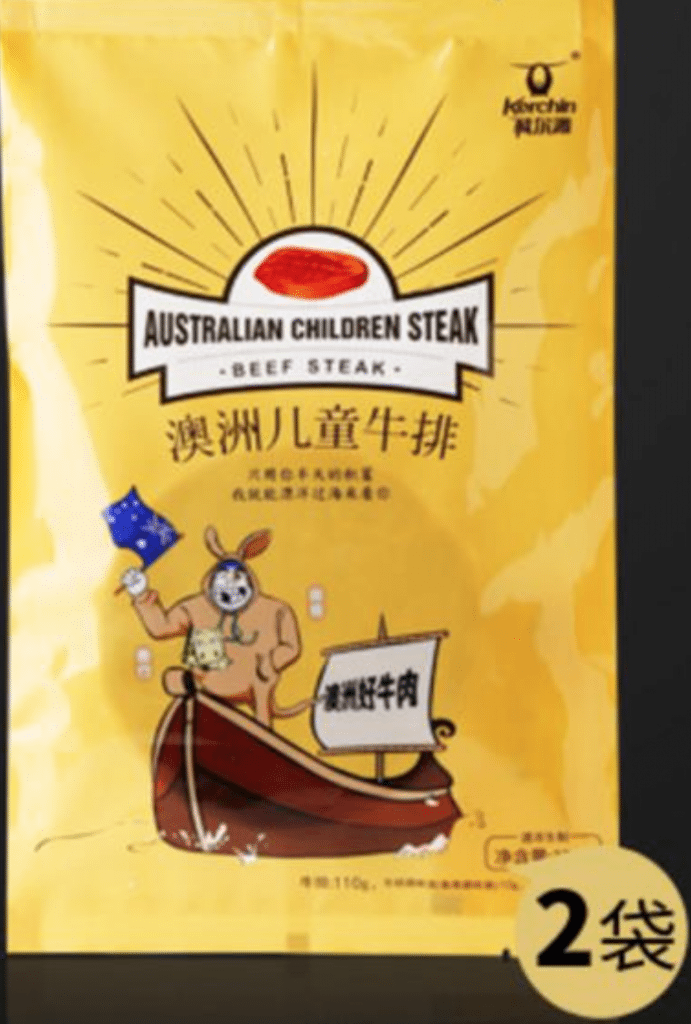
Here’s one particular product that caught our eye during the presentations: Australian Children Steak? Draw your own conclusions..
Food delivery transformation in Indonesia
Anyone who has visited Indonesia in recent years would recall seeing thousands of motorbikes on roadsides offering taxi or delivery services. In 2014 an entrepreneur grouped all of those individuals together, gave them green helmets and green jackets, and organised them through a mobile app which lets users book drivers. In the process he has revolutionised how food is delivered in Indonesia. Go Jek now has 250,000 green uniformed riders who can deliver your supermarket goods for $1, or will bring you home a takeaway burger for $1. This trend is further transforming how retailers want products packed to ensure they are convenient for consumers. MLA is working with retailers to reinforce the integrity systems underpinning Australian beef, and the health, safety and cleanliness of Australian product, and how that supports this trend. (Andrew Simpson, MLA South East Asia manager)
Earlier Beef Central stories from MLA Global Markets Forum:

